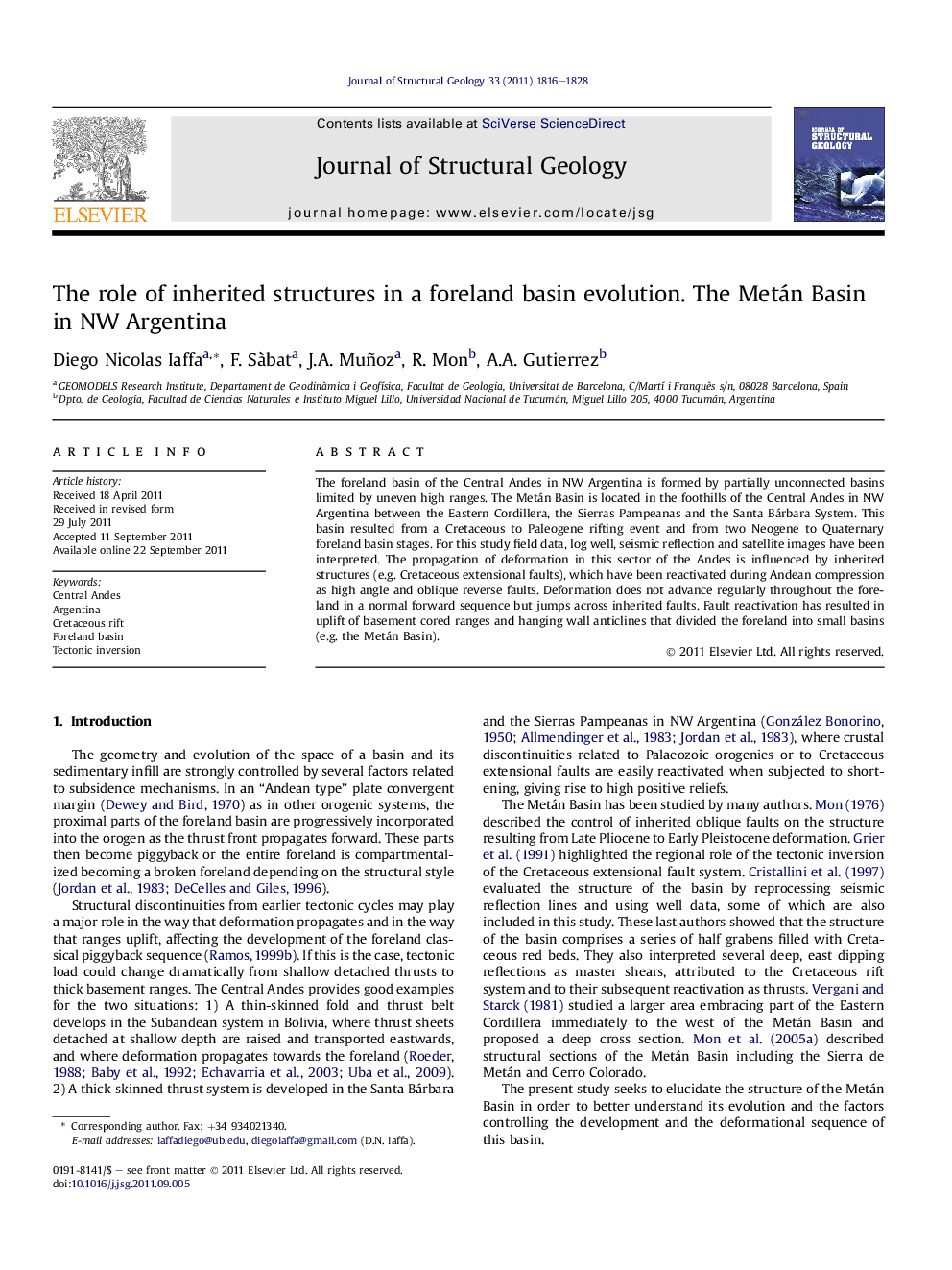| Article ID | Journal | Published Year | Pages | File Type |
|---|---|---|---|---|
| 4733434 | Journal of Structural Geology | 2011 | 13 Pages |
The foreland basin of the Central Andes in NW Argentina is formed by partially unconnected basins limited by uneven high ranges. The Metán Basin is located in the foothills of the Central Andes in NW Argentina between the Eastern Cordillera, the Sierras Pampeanas and the Santa Bárbara System. This basin resulted from a Cretaceous to Paleogene rifting event and from two Neogene to Quaternary foreland basin stages. For this study field data, log well, seismic reflection and satellite images have been interpreted. The propagation of deformation in this sector of the Andes is influenced by inherited structures (e.g. Cretaceous extensional faults), which have been reactivated during Andean compression as high angle and oblique reverse faults. Deformation does not advance regularly throughout the foreland in a normal forward sequence but jumps across inherited faults. Fault reactivation has resulted in uplift of basement cored ranges and hanging wall anticlines that divided the foreland into small basins (e.g. the Metán Basin).
► We present results from thirty-six seismic section were interpreted in 2D plus the analysis of six wells and field data. ► An structural map of the Metán Basin and four cross sections joining the underground and surface structure were obtained. ► Tectonic inversion of Cretaceous extensional faults and basement related deep detached structures were distinguished. ► The evolution of the basin and its structures were analyzed to understand its deformational sequence.
